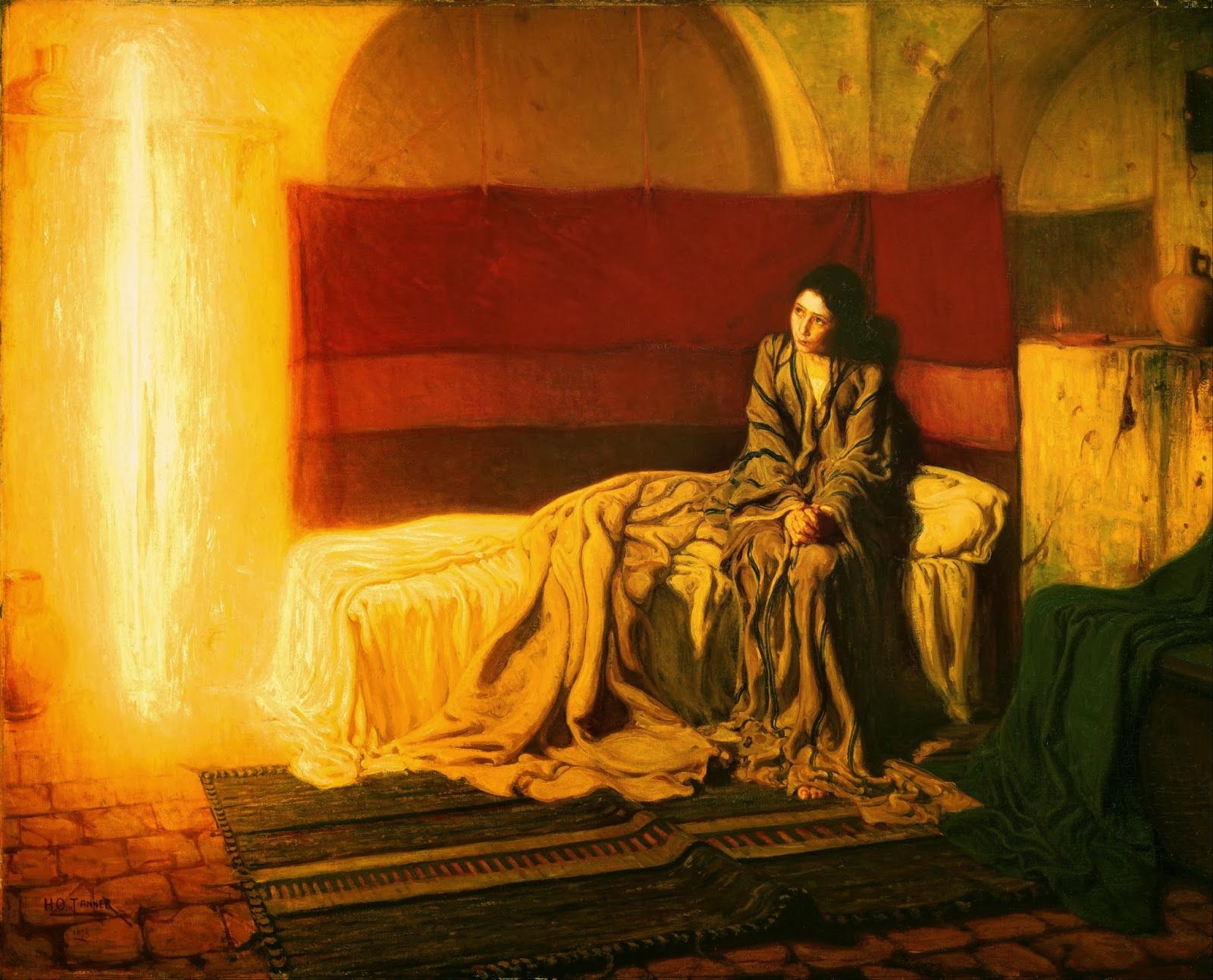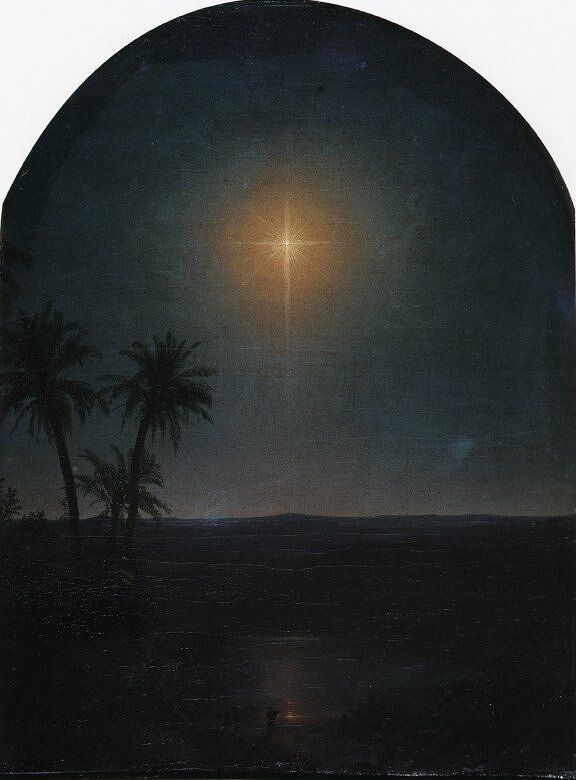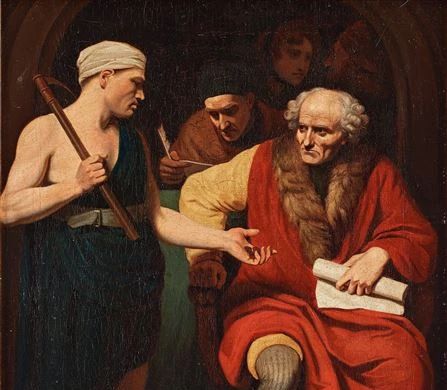
Timing of the Trip to Bethlehem
According to the prophecy given by the apostle John in the Book of Revelation, Mary became pregnant during one of the three annual Fall Jewish Feasts known collectively as Rosh Hashanah (Revelation 12:1). These three Feasts occur during a new moon and include the Feast of Trumpets or announcement, the Feast of Yom Kippur the High Holiest Feast of solemn prayers for forgiveness of sins, and the Feast of Sukkot or Tabernacles when God dwells with man. If Jesus was conceived during the holy Feast of Yom Kippur, and we count off nine months from September 3B.C., Jesus would have been born in June of 2B.C. And it was on June 17th 2B.C. that the planets Jupiter and Venus completed an extremely rare triple conjunction stacking within two degrees of each other directly over Bethlehem. The planets created a figure eight. The number 8 represents a new beginning, and if you lay this number on its side, it forms the sign of eternity. To the naked eye, these two planets combined to become the largest and brightest star ever seen in Judea!

After Mary accepted the Angel Gabriel’s offer to serve as mother of the Messiah, she left Nazareth and traveled one hundred miles directly south to the town of Hebron in the hill country of Judea. There she met with Elizabeth, a blood relative who was pregnant with her son John, later known as John the baptizer. She stayed with her three months and then returned home (Luke 1:39, 56). Therefore, Mary was at least four to five months pregnant at this time. Oral tradition states that Mary helped in the birth of John then left for Nazareth (Luke 1:57).

Scripture states that, “…in those days…” or during the time of Mary’s pregnancy, a Roman census and taxation decree was issued (Luke 2:1). We know that Caesar Augustus also known as Caius Octavius was celebrating his 25th anniversary as Caesar and Rome was celebrating the 750th year anniversary of its founding. Therefore, there were many celebrations taking place throughout that year and throughout the empire. Many were funded in part or wholly by the Roman government. Caesar was understandably experiencing a cash flow problem and there was only one way to solve it. He issued an impromptu early census and taxation on various territories. We don’t know how many months pregnant Mary was when the decree was announced but we do know that by the time Mary was entering Bethlehem, her water had broken and she was going into labor. Therefore, Mary must have been at least eight or more likely nine months pregnant when they started their seventy mile, seven day journey to register for the census and pay the associated taxes. The physical strain of the journey most probably caused her to go into labor when she did. Or, the Holy Spirit caused her to go into labor to force the birth of Jesus to take place the way it did, or both.
Joseph was by all accounts a loving husband therefore, to have taken his pregnant teenage wife in mid-June on this long, hot and arduous trip would at first glance seem more than a little insensitive. But there were a number of extenuating circumstances that forced them to make this journey together at this time. First, Rome traditionally taxed people in their place of residence. But in the case of Judea, the Jewish authorities requested permission from Rome to allow the census registration to take place in the chief tribal town of the male head of a household. This in turn helped the temple update their census rolls and accurately reassess the population numbers of each tribe, the number of Jews in each region and most importantly, the accuracy of Temple taxes owed. Secondly, Rome may have also required all married males to personally appear and give an account of their family members, property owned and a pledge of allegiance to the rule of Rome. See related paper "Meaning of a Head Tax." And, if Joseph was 19 years old or older, then according to Jewish Law, he was of legal age and thus he would have been required by Law to make the trip and register. During the Exodus, it was established that a person under the age of nineteen was not to be held legally libel for their actions (Numbers 32:11; Deuteronomy 1:39). If Joseph had been under the age of nineteen, he would have been considered a minor or a dependent and his father would have reported him for tax purposes. Therefore, we can assume that Joseph was at least 19 years old. And scripture states that Joseph undertook the trip with his wife with no mention of parental supervision.

Scripture states that the mother of the Messiah would be a “virgin” (Isaiah 7:14; Matthew 1:23). The word virgin in Hebrew is alma or haalmah. There are three Hebrew words that Isaiah could have chosen to use concerning a female. But alma is the only one that exclusively denotes a virgin and not simply a young woman. Prophetic Scripture does not make a reference to the age of the male involved in creating the Messiah. This is because the biological father of the Messiah would be God. Thus, Jesus is rightfully called the only {physically} begotten Son of God.
Joseph may have been in a difficult situation trying to time out Mary’s birth relative to the taxation deadline. He may have put off the trip hoping that Mary would deliver before the deadline and then the two could travel to Bethlehem and register. However, it might have been that Joseph simply wanted Jesus to be born in Bethlehem and in the actual house of David now converted into an Inn, so as to satisfy an ancient prophecy (Micah 5:2).
Related Paper:

If you enjoy the information provided on this site, please consider making a donation of any amount to help continue its production. Donate Now
